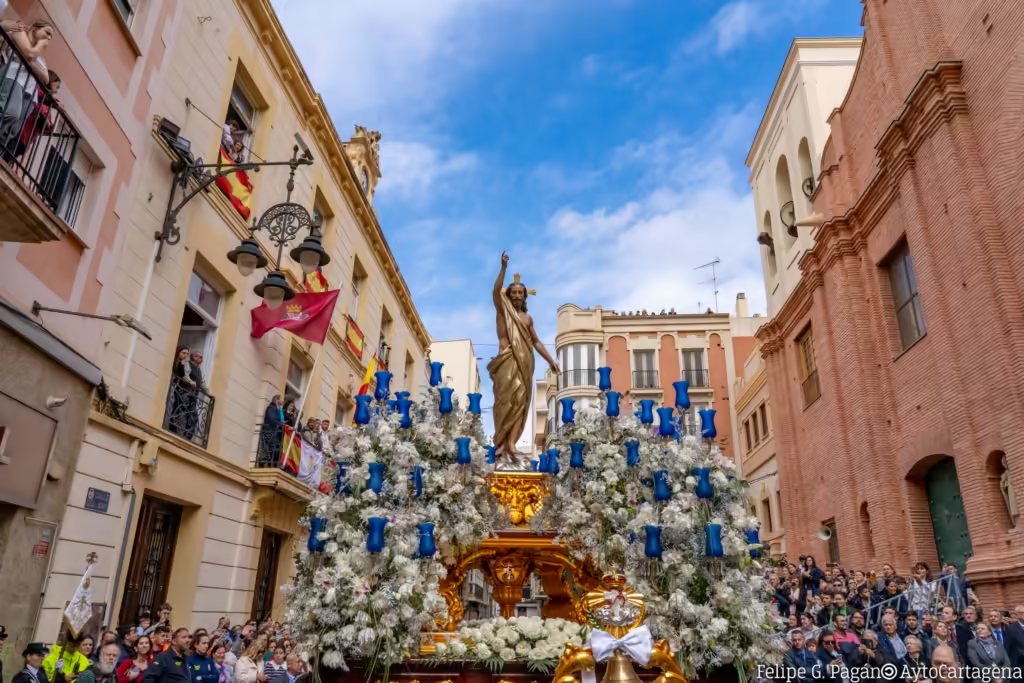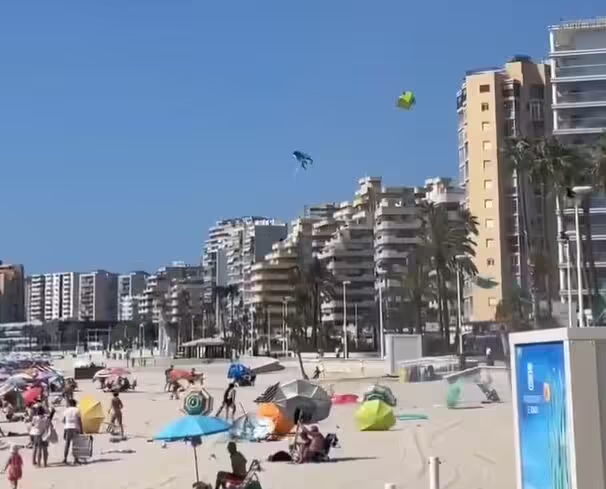A Guide to Easter Sunday in Spain
Easter Sunday in Spain, known as Domingo de Resurrección, marks the end of Semana Santa, Holy Week, in most regions and the celebration of the resurrection of Christ. While it is undeniably significant in the Christian calendar, the atmosphere on this day can feel quieter compared to the dramatic intensity of Holy Thursday (Jueves Santo) and Good Friday (Viernes Santo), which are often the emotional and ceremonial high points of the week in many places in Spain.
What to Expect on Easter Sunday in Spain
In many towns and cities, Easter Sunday begins with a final procession, often held in the morning. Unlike the solemn and sometimes haunting processions of earlier in the week, this one tends to be more celebratory. Statues of the risen Christ, often accompanied by floral decorations and lighter music, are paraded through the streets. The air feels fresher, the pace more relaxed, and the mood, though respectful, is noticeably brighter.
That said, Easter Sunday is also a transition day. Many Spanish people who have spent Holy Week visiting family or travelling begin their journeys home. This can create a mixed atmosphere, part celebration, part winding down.
Are Easter Sunday Processions Suitable for Children?
Yes, especially on Easter Sunday itself. The earlier processions during Holy Week, with hooded penitents (nazarenos), slow marches, and heavy incense, can be intense or even unsettling for young children. Easter Sunday processions, by contrast, are usually more family-friendly. The music is uplifting, and the mood is one of renewal and hope. It’s a good opportunity for families to share in a local tradition together.
Easter Sunday Processions Across Spain
Easter Sunday may feel lighter in mood, but it’s still an important day in the Spanish calendar, marked by processions in towns and cities across the country. These are usually held around 10 a.m., though exact times vary, so it’s worth checking local listings or town hall announcements.
In Cartagena, the Real e Ilustre Cofradía de Nuestro Padre Jesús Resucitado leads a beautifully orchestrated procession featuring the Triumphant Cross, Saint John, and the Virgin of Beautiful Love.
Cáceres hosts a symbolic and moving encounter between the Risen Christ and the Virgin of Joy in the Plaza Mayor, organised by the Cofradía de la Soledad.
In Granada, several brotherhoods take part, including the Hermandad de Resurrección y Triunfo and the cheerful Facundillos, where children ring bells to welcome the resurrection.
Málaga celebrates with processions of the Santísimo Cristo Resucitado and María Santísima Reina de los Cielos, while in Murcia, the streets fill with colour and movement as eleven brotherhoods accompany the Real y Muy Ilustre Archicofradía de Nuestro Señor Jesucristo Resucitado, alongside the traditional appearance of a chained devil, representing the triumph of good over evil.
And in Sevilla, the Hermandad de la Resurrección closes the week with a dignified and joyful procession from Santa Marina.
Wherever you are in Spain, you’re likely to find events, processions, and mass taking place throughout the day, offering a chance to experience this moment of renewal alongside the local community.

Traditional Easter Sunday Meals in Spain
While Easter Sunday meals vary from region to region, roast lamb is a common dish on this day, often served with potatoes or seasonal vegetables. In some areas, seafood remains popular due to lingering Lenten traditions.
Sweet treats begin to reappear more prominently after the fasting and reflection of Holy Week. One of the most iconic is the mona de Pascua, a sweet cake traditionally given to children by their godparents. However, these are typically eaten on Easter Monday, which is only a public holiday in some regions such as Cataluña, Valencia, and the Balearic Islands. That said, monas are often available in bakeries throughout the Easter period, and many families enjoy them whenever it suits them.
Eating chocolate Easter Eggs is not really a tradition in Spain, but it has begun to creep in in recent years. The same goes for the Easter Bunny, he doesn’t traditionally leave eggs for the children in Spain. This varies from family to family.
Tips for Experiencing Easter Sunday in Spain
- Look up local schedules: Easter traditions vary widely by region. In some areas, the Sunday procession is modest; in others, it is a key event.
- Plan travel accordingly: Roads and transport hubs can be busy, especially in the afternoon, as people return home after the holidays.
- Dress appropriately: Even on this more relaxed day, smart attire is expected at church services and public events.
- Try regional dishes: If you’re invited to lunch, accept! Easter Sunday meals are a great chance to experience traditional Spanish food.
Interestingly, while Easter Sunday marks the climax of the Christian story, in Spain, it does not always feel like the peak of the week. Holy Thursday and Good Friday often feel more important, both in terms of religious observance and public engagement. These days feature the most dramatic processions, drawing large crowds and commanding a powerful emotional response.
It’s also worth noting that on Easter Sunday, many shops and services remain closed, and people begin to return home in the afternoon/evening if travelling to other regions in Spain.
What Are Your Plans This Easter Sunday in Spain?
Whether you’re heading out early to catch your local procession, gathering with family for a traditional lunch, or simply enjoying the change in atmosphere, Easter Sunday in Spain is a day to pause and reflect. The sound of drums and trumpets, the smell of fresh flowers, and the sight of neighbours dressed in their Sunday best all add to the sense that something meaningful is happening. Are you planning to watch the processions? Will you be sharing torrijas or enjoying a Mona de Pascua? We’d love to hear how you spend Easter Sunday in your part of Spain. Let us know in the comments or tag us in your photos on social media.
Main image: Shutterstock/Pixel-Shot
Share this content:




2 comments